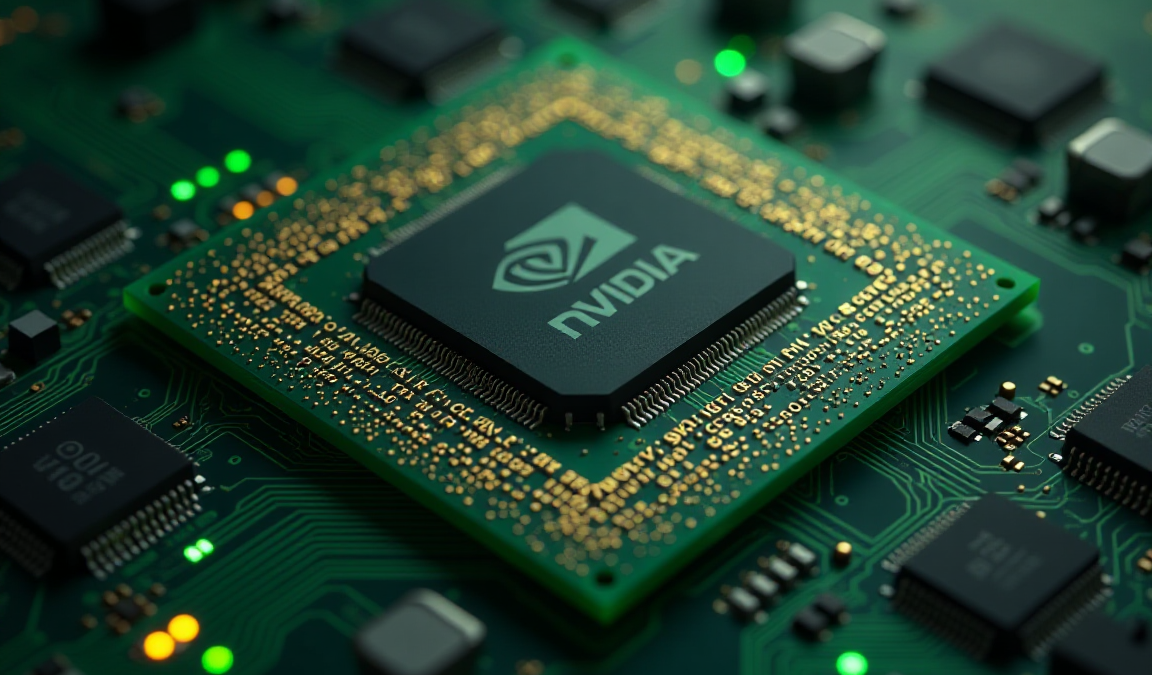Nvidia’s extraordinary profitability, a 74% gross margin that towers over the semiconductor industry, faces its first real stress test today.
As the company reports Q3 results, investors will scrutinize whether pricing power holds amid aggressive competition from AMD, Intel, and custom hyperscaler chips.
Analysts will parse guidance, server inventory, and hyperscaler procurement updates for early signs that AI-driven pricing premiums and demand intensity are starting to soften.
A single percentage point of margin compression could signal the end of Nvidia’s monopoly era and reshape the entire AI chip investment thesis.
The competition problem: AMD, custom chips, and the pricing squeeze
AMD’s MI300 series is undercutting Nvidia by 30-40%. Meanwhile, hyperscalers like Google, Amazon, and Meta are quietly building custom silicon to reduce dependency.
These aren’t footnotes; they’re the beginning of a fragmented AI chip market. Even if AMD hasn’t cracked Nvidia’s 90% market share yet, the existence of alternatives gives customers leverage.
When you’re buying billions in chips, leverage matters. Custom chips represent perhaps the greater threat.
Google’s TPUs deliver comparable training performance at a much lower total cost of ownership. As more hyperscalers follow suit, Nvidia’s core data center revenue faces structural headwinds.
Competition is not a future concern; it is already here.
The real question is whether Nvidia can maintain pricing discipline when customers now have genuine options.
What investors should watch: Three margin signals from Nvidia Q3 earnings
First, track the gross margin guidance for Q4 and fiscal 2027. Wall Street is modeling 72.5-73%, but anything below 72% signals accelerating competitive pressure.
Second, listen for average selling price (ASP) trends hidden in the earnings commentary.
If revenue grows but implied unit volumes surge without corresponding ASP growth, that’s a warning flag. Nvidia won’t disclose ASP directly, but savvy investors can infer it.
Third, watch the product mix breakdown. Higher exposure to gaming and automotive, both lower-margin segments, would explain margin compression while Nvidia maintains its narrative about pricing power in the data center.
Management commentary on customer concentration matters too. If Nvidia acknowledges that Microsoft, Amazon, Alphabet, and Meta are negotiating harder on volume discounts, that’s an admission that the dynamics have shifted.
Today’s earnings aren’t just about Q3 numbers. They’re a referendum on whether Nvidia has truly transcended the semiconductor commoditization cycle.
Or, the company could be entering the inevitable competitive gauntlet that has humbled Intel, AMD, and every other dominant chip player.
Margin compression may seem incremental. Yet, at Nvidia’s scale, each percentage point represents over $500 million in forgone gross profit, an unmistakable signal to markets that the era of effortless dominance may be slipping, however subtly, out of reach.
The post Nvidia Q3 earnings: can NVDA defend its 74% margin as competition intensifies? appeared first on Invezz

